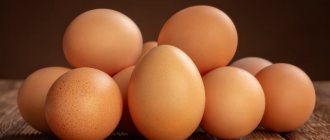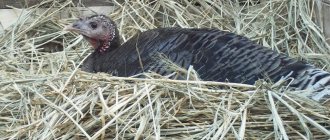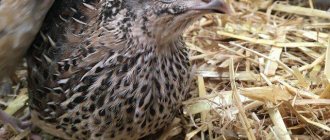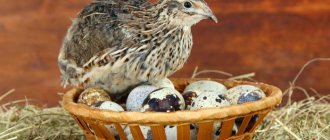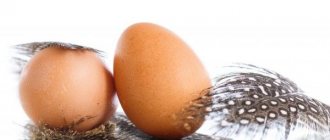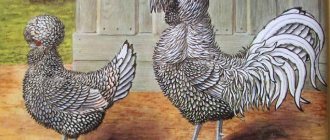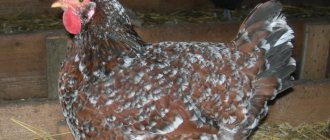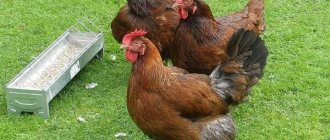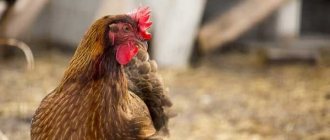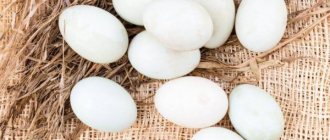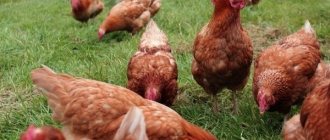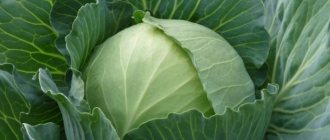Dominant chickens are well known to farmers and rural residents. These poultry are characterized by high resistance to diseases and are undemanding to living conditions. They attract not only their external characteristics, but also their good productivity. Chickens are raised to sell meat carcasses and eggs.
Dominant chickens are a hybrid of several breeds (the so-called “cross”), bred by Czech breeders. The offspring of such chickens will never have the same excellent characteristics as their parents. Crosses are not intended for further breeding, since Dominant chicks will have almost the same characteristics as ordinary domestic chickens.
Description of the cross
Chickens are distinguished by a massive body and short legs. The head of the chickens is elegant and small, it is replete with a comb and scarlet earrings. Often this bird is bred not only for production, but also for beauty.
A feature of these chickens is their high egg production, due to which Dominant birds are considered real record holders. Thanks to this, breeders receive good benefits, and the birds are unpretentious in food and can feed themselves when free-range.
The convenience of cross-breeding is that even at a young age it is easy to distinguish females from males. Chickens have darker plumage, roosters have lighter plumage.
Another advantage of Dominants is their calm nature. Birds can hardly be called aggressive. This is a great success for farmers. Birds thrive both indoors and outdoors. But it is not advisable to keep them in a limited living space, since chickens must go out for walks. If it is impossible to provide them with an area for walking, placement in low enclosures is acceptable.
Due to the fact that sunlight promotes the synthesis of vitamin D, it is preferable that the bird has free access to the street - this allows it to improve its health.
The table shows the main productivity indicators of Dominant chickens:
| Index | Characteristic |
| Productivity type | crosses, broilers, egg |
| Male weight | average weight 2.1-3.5 kg |
| Female weight | average weight 2.1-3.5 kg |
| Egg production | high – more than 250 eggs per year |
| Egg size and weight | large, weighing more than 60 g |
| Beginning of oviposition | fast – 4-5 months |
| Availability | average |
| Peculiarities | unpretentiousness to conditions, resistance to diseases, adaptation to any climate |
Origin
The appearance of Dominant chickens occurred thanks to the breeding work of Czech specialists. They decided to develop a hybrid that, with high productivity rates, would be characterized by increased resistance to many diseases, while perfectly adapting to the conditions of detention.
When carrying out breeding work, the following breeds of chickens were taken as the initial species: Plymouthrock, Sussex, Rhode Island, Leghorn, and Cornish. The resulting Dominant crosses, in addition to the listed characteristics, pleased us with their high productivity of eggs with excellent taste characteristics and nutritional value of the resulting meat.
Cross purpose
Breeders are engaged in breeding Dominant chickens, in particular, due to the fact that the birds are not only highly productive, but also have high immunity and unpretentiousness. In addition, laying hens and roosters of this variety provide farmers with an excellent supply of meat, which has a delicate taste and pleasant aroma.
Chicken lovers can use Dominants for meat. This is especially true when chickens have decreased egg production. But, despite the fact that birds have an impressive body weight, they are largely raised exclusively for eggs.
These chickens have high egg production rates. Already at the age of one year, laying hens lay up to 300 eggs per year. But to obtain such indicators, a balanced diet and quality care are important. Chickens lay eggs well until they are 3-4 years old, after which the number of eggs is significantly reduced.
Reviews
Alla, 41 years old, Krasnoyarsk
Several years ago we moved to live in a village house and immediately decided that we would have chickens. Our choice fell on the dominants, and, as it turned out, not in vain. These birds are in good health and enjoy excellent productivity. In a year, one chicken produces approximately 300 eggs. We have 9 hens and 1 rooster. So we consistently have 6-8 eggs per day. More than enough for a small family like ours.
Oksana, 56 years old, Belgorod
Relatively recently, dominants were introduced. This is not our first breed of chicken, but perhaps the best at the moment. Birds tolerate cold winters and summer heat well, get sick very rarely and lay 280-300 eggs per year. Moreover, their productivity does not depend in any way on weather conditions. By the way, the eggs of dominants are noticeably larger in size and weight than the product sold in supermarkets, and they are much tastier.
Vitaly, 32 years old, Volgograd
Keeping Czech chickens on your farm is a pleasure. They are absolutely unpretentious to living conditions. The same can be said about their feeding. We give them ready-made feed and greens from the garden, and the birds thank us with large, fresh homemade eggs. On average, one chicken lays 5-6 eggs per week, which is a very good indicator of productivity. After 3.5 months, we chop the cockerels for meat - the broth they make is low-fat, very tasty and aromatic.
Advantages and disadvantages of cross
Dominant chickens have their pros and cons. Before you start breeding this bird, it is very important to first become familiar with its positive and negative sides in order to know what awaits the breeder in the future.
Advantages of poultry:
- Early maturation. Chickens begin to lay eggs early, and they are large and have excellent taste, which especially attracts buyers. Dominants lay eggs almost every day, provided adequate feeding and favorable conditions are maintained.
- Fast growth. At the age of 3.5-4 months, birds can already be sent for slaughter. Their meat is tasty, tender, and dietary.
- High egg fertility rate. The hatchability of chicks is close to 90%.
- Calm character. The birds are calm, balanced, non-aggressive. Not prone to panic attacks, they adapt easily and quickly get used to their owner.
But the cross also has a lot of disadvantages:
- Demand for feed. In the absence of complete feed containing proteins and calcium supplements, egg production in chickens sharply decreases. This also affects the onset of oviposition.
- Crowding in the poultry house. If you keep birds in a cramped room, they may start pecking. As a rule, if chickens are allowed to roam, they do not have problems with cannibalism.
- Stealth. Farmers often cannot determine whether hens are laying eggs or not, since laying hens can hide their eggs in secluded places. This behavior indicates that the bird does not have enough space to lay eggs. Clucking is a sign that the hen is preparing to incubate.
Description of the dominant breed
This species is an improved hybrid of the classic laying hen, which combines decorative properties and egg production. Females begin laying eggs at 5 months. At the same time, they are resistant to negative factors and common infections. If parasites and viruses enter the poultry house, the animals remain healthy or easily suffer the disease.
Czech scientists worked on the creation of the breed, trying to develop a productive hybrid with resistance to harsh conditions. Representatives of different breeds were used for breeding work, which allowed specialists to preserve the best properties in one hybrid.
Some breeders claim that the Czech Dominant is practically devoid of disadvantages, which makes it in demand for private poultry farming.
Birds are in demand in more than 30 countries, and in Switzerland they are included in organic production programs. Chickens are no less in demand in the CIS countries, where they are superior to ordinary laying hens in terms of productivity.
The description of external properties mentions a muscular body with voluminous feather cover. In addition, individuals have a miniature head with a leaf-shaped crest and red “earrings”. Due to their short limbs and lush plumage, chickens look squat. And the tight fit of the wings to the body gives them additional massiveness.
Dominant chickens are the most productive breed for egg production.
Since high decorativeness is one of the key advantages of the breed, poultry farmers raise specimens with different feather color options. Among them:
- Black.
- Grey.
- Gold.
- Goluboy et al.
Dominant chickens are easily distinguished by gender. So, hens have dark feathers, while roosters have lighter feathers with characteristic inclusions on the top of the head.
According to reviews from bird owners, the best external properties and productivity are characteristic of the following crosses:
- Blue D 107.
- D 104.
- Dominant GS 459.
- Dominant speckled D 959.
Productivity
Dominant chickens are quite large in size. The weight of chickens can reach 1.8-2.3 kg, the weight of roosters - up to 3 kg. Laying hens begin laying eggs as early as 4-5 months, and the very first egg is impressive in size - 65-75 g. Laying hens often produce eggs weighing up to 118 g, but most often they have two yolks, so they cannot be used for incubation.
Roosters gain weight faster. There is one rooster for every ten chickens in a private backyard. Birds are released for meat after being culled based on their appearance: disproportionately developed body (sunken chest, sagging back). A decrease in egg production often occurs due to several molts of laying hens during the year. It is best to send such hybrids to slaughter.
Productivity of Dominants depending on age
| Age group | Productivity |
| 4-5 months | 85-90% |
| 2-3 years | 99-100% |
| 4-5 years | 80-85% |
| over 5 years old | 65-70% |
Productivity and egg production of chickens
The Dominant chicken breed may well be considered one of the leaders in productivity if used for commercial purposes. For farmers, these chickens are an excellent option for raising poultry for eggs and meat.
In terms of egg production, chickens of the Dominant breed have no equal. A laying hen of this breed can lay up to 320 or more eggs per year. Let's look at what kind of eggs chickens of this breed lay.
- Eggs with a brown shell. There are invented legends among buyers that brown eggs are always produced by a domestic hen, while white eggs come from an incubator. This is a wrong opinion. The color scheme of the eggshell depends directly on the plumage of the individual itself. In this regard, the color of the shell can be different. The shell of cream-colored chickens of the Dominat breed is blue, brown, brown, Sussex. Apart from the Dominant Leghorn, other crosses have a brown color.
The brown color of an egg is usually associated with the color of the plumage of a particular individual.
- Eggs with white shells. The fertility of any breed of chicken does not depend in any way on the color of the eggshell. If the chicken's plumage is naturally white, then the outer hard shell of the eggs will be white. In homesteads or farms you can often find Dominant white chickens. These birds are distinguished by early sexual maturation. Therefore, egg laying begins quite early, after five months of age. They then lay eggs continuously throughout the year. They produce more than 300 eggs annually. These crosses still have one drawback - the lack of maternal instinct.
White eggs are laid by chickens with light plumage
The highest peak of egg laying occurs when the chicken reaches the age of more than one and a half years. At this moment, the number of eggs laid annually by one chicken can be more than 320 pieces. After three years of age, a chicken's egg production gradually decreases.
The quality of the contents directly determines when exactly the chicken will start laying eggs. If the care is poor, then it is unlikely that she will lay an egg even in six months. Therefore, if a farmer is serious about raising poultry, it is recommended to create comfortable living conditions for the birds.
Prices for an ovoscope for diagnosing eggs
Ovoscope
Varieties of chickens
The most famous varieties of Dominant chickens today are the following species, which have their own characteristics and differences from each other. Before breeding, it is important to know which bird is special:
Brown (D102)
A distinctive characteristic of laying hens is their brown color with white patches. Roosters are white in color with some yellow or brown tints added.
Sussex (D104)
These birds have a snow-white body. Black feathers with a speckled pattern on the tail and collar are visible. The advantage of breeding this cross is the good survival rate of chickens in the first months. The weight of adult individuals reaches up to 1.8 kg. The most productive age is considered to be up to 1.5 years.
Partridge (D959)
These birds are also called speckled Dominants. They are characterized by golden-brown feathers and a color similar to that of the Leghorn variety. Partridge chickens adapt well to Russian winter conditions. The weight of the eggs reaches up to 60 g, the color is white or cream.
Red (D853)
These birds have a bright, rich color, which they received by crossing with the Rhode Island breed. Already from the age of 5 months, laying hens begin to lay eggs, usually producing eggs once every two days. They are characterized by average productivity and low maintenance requirements.
Red striped (D159)
From the paternal line they come from egg crosses with a predominant striped color. The maternal line is from white Rhode Islanders. The advantage of cross-breeding is high immunity and excellent productivity. They have red plumage with black edging, creating spectacular striped patterns.
Blue (D107)
A distinctive feature of the blue Dominant is the plumage of the body of a bluish tint. Laying hens have a black neck, while roosters have a black and white stripe on their neck, back and tail. The Blue Dominant is considered an ornamental bird that can be kept in both small and large farms. This is why chickens are most valuable.
Black (D109)
Laying hens have a high desire to hatch eggs. They lay small eggs, but in good quantities. They are distinguished by a uniform color throughout the body, feathers with a blue tint. Roosters have splashes of contrasting shades.
Speckled (D959)
The speckled Dominant has gray-white or golden-brown feathers. Externally the bird is very attractive. Laying hens lay white or light brown eggs. Breeders value these chickens for their ability to adapt to any climate, both cold and hot. Even in very cold winters, the egg production rate of birds does not decrease. Due to its striped color, it bears a similar resemblance to the famous, fairy-tale pockmarked hen.
Leghorn (D229)
Chickens that are completely white in color. Adult roosters are distinguished from hens by a darker and more powerful comb. This Dominant variety is most popular in Poland, is actively sold on the Belarusian market, and recently appeared in Russia. Leghorn is considered the record holder for egg production - a laying hen produces up to 310 eggs per year. Closer to three years, the minimum weight of the bird reaches 2 kg.
Painted D723
An amazing variety of Dominant, characterized by high egg production rates: a laying hen produces up to 315 cream eggs per year, the average weight of which is 62 g. At the same time, 115 g of feed is consumed per bird per day. These are small birds, the sex of which is distinguished by the length of the feathers on the wings: in roosters it is longer.
Dominant chickens of various colors
All subspecies have different appearance characteristics. At the same time, the birds have a squat body due to a wide chest and short legs. Roosters have larger earrings than chickens.
Description of Dominant chickens: breeds or programs
Birds of all developed crosses or, as the Czech originators call them, programs, have strong bones and look somewhat squat due to short legs and thick plumage. The head is small in size with a red crest and earrings in both roosters and hens. To date, 16 variants with a wide variety of colors have been officially registered. In addition to the name, all of them are designated by the letter “D” with a three-digit digital code. Let's take a closer look at some of them:
Brown D 102
So far the only representative of dominants included in the State Register of the Russian Federation in 2021. This two-line cross is approved for cultivation in all regions of the country, as it is well adapted to the harsh conditions of intensive poultry farming using cage technology. Brown laying hens are in great demand among farmers and owners of small plots in Poland, Slovakia, Ukraine, Kazakhstan and other countries.
This cross is obtained by crossing two varieties of Rhode Island: brown on the paternal side and white on the maternal side.
Day-old chicks are separated by gender based on the color of their plumage: in cockerels it is yellowish-white, and in hens it is brown.
The viability of young animals from the 1st to the 18th week is 95-97%. During this time, females gain weight of about 1.4 kg, and males - 2 kg (with feed consumption of 6.1 and 6.7 kg, respectively). From the age of 4 months, chickens begin to lay eggs; maximum activity (93%) of egg laying occurs at the 29-30th week of life. According to Czech experts, the productivity of laying hens in 74 weeks is more than 315 large eggs (weighing on average 63.5 g) with a brown-brown shell. With such intensity, maintenance after 18 months is considered inappropriate, and the livestock is renewed. The live weight of adult chickens reaches 2.2 kg.
Sussex D 104
A popular variety created on the basis of the Light Sussex breed and similar in plumage color. Intended primarily for homesteads and small farms, it is widespread in Europe, Asia and Latin America due to its high adaptability and adaptability to various climatic conditions.
The cross is obtained by crossing populations of fast-feathering (paternal) and “slow” (maternal) Sussexes
Chickens are sexed based on the rate of growth of feathers on the wings - feathers appear in cockerels later than in hens.
By the age of 18 weeks, the safety of the livestock is 95-97%, while chickens gain live weight up to 1.5 kg, and roosters 2.1 kg. Egg production indicators for this variety are at a high level: 290-300 eggs (60-62 g each) with beige-brown shells in 74 weeks. The weight of an adult chicken reaches 2.15 kg.
Blue D 107
In terms of the spectacular color of their plumage, representatives of this hybrid resemble the old Andalusian breed. The main advantages are their high vitality, endurance and adaptability. These birds are recommended for amateur rearing in European countries and industrial poultry farming in extreme climatic conditions, for example in Africa.
D 107 is obtained by crossing Plymouth Rocks: blue population on the paternal side and striped on the maternal side
The sex of day-old chicks is determined by the color of the down: in hens it is dark, while in cockerels there are stripes and a light spot on the head.
Egg production is high - about 300 eggs in 74 weeks. Eggs average 62 g with a brown shell. At 18 weeks, chickens weigh up to 1.5 kg, and by the age of 78 weeks - more than 2 kg. Feed consumption per hen is 122 g per day, that is, about 45 kg for the entire egg-laying period.
Black D 109
One of the most popular varieties, widespread in Europe and capable of adapting to difficult climatic conditions (Africa, Latin America, Asia) thanks to its strong immunity. It has proven itself well when grown in personal and small farms.
Program D 109 is based on crossing the paternal population of Rhode Island brown with the maternal line of speckled Plymouth Rock
Gender differences in day-old chicks are clearly manifested in the color of the down on the head: cockerels have a white spot - a “cap”.
Black laying hens are capable of producing more than 310 eggs with dark brown shells in 74 weeks. In terms of their mass (about 60 g), the eggs correspond to the first category of GOST 31654-2012. Hens, unlike most other hybrid chickens, exhibit a pronounced maternal instinct and willingly incubate the clutch, and not only their own.
Partridge D 300
With its interesting “wild” plumage color, the bird is similar to the old breed of chickens “Italian Partridge” (“Brown Leghorn”). Manufacturers recommend this cross for cultivation on small farms and in households throughout the summer season.
Partridge hybrids are obtained by crossing brown leghorns: fast-feathering (paternal) and “slow” (maternal)
Day-old hens are distinguished from cockerels by their faster plumage growth.
Productivity indicators are at a high level: laying hens from the age of 4-5 months produce about 300 eggs with white or cream-colored shells in a year and a half. By the end of the period of active egg production, the average weight of the chicken is slightly more than 2 kg with a feed consumption of 45 kg per head for the entire cycle.
Tricolor D 301
In terms of its characteristics and productivity indicators, this hybrid of birds is almost identical to the previous one, but differs in a more elegant and variegated, speckled color of the feathers.
To obtain a cross, brown Leghorns with tricolor plumage are used.
Chickens are also distinguished by the speed of feather growth - in future laying hens they appear earlier.
Yantarny D 843
In addition to stable egg production and the ability to adapt to unfavorable conditions, representatives of this cross are very decorative, which has made them very popular among European poultry farmers.
The amber cross appears as a result of crossing different populations of Rhode Island: on the paternal side - fast-feathering whites, and on the maternal side - slow-feathering browns
By gender, day-old chicks are distinguished depending on the growth rate of feathers on the wings: in hens they appear faster.
Laying hens demonstrate excellent productivity, laying 300-310 eggs with a strong brown-brown shell in 74 weeks. The average egg weight is 62.5 g.
Red D 853
One of the popular crosses, part of a group of birds of similar colors (along with Red D 229 and Red Striped D 459). It has proven itself well in amateur poultry farming in many countries of the world.
The hybrid was obtained by crossing Rhode Island: red fast-feathered on the paternal side and brown on the maternal side
The sex of day-old chicks can be distinguished by the rate of plumage growth, in which the cockerels lag behind the females.
By the beginning of the laying period (4 months of age), chickens with an average feed consumption of 6.5 kg per head weigh 1.5 kg. Each hen can lay more than 300 eggs with brown-brown shells in 74 months.
Conditions of detention
The conditions created in the poultry house affect the quality of meat and the egg production rate of chickens. That is why experienced breeders, when keeping Dominant birds, recommend providing them with proper conditions.
Room and temperature
Despite the fact that birds are able to adapt to even slightly sub-zero temperatures, in order to ensure high egg production rates, it is better to insulate the house and ensure that the temperature in it is maintained at least -5 degrees.
There should be no more than 4-5 laying hens per 1 square meter. For bedding, it is best to use peat or straw, pre-mixed with a layer of lime - this prevents the appearance and proliferation of pathogenic microflora.
A distinctive characteristic of birds is that females do not always stop laying eggs during the change of feather cover, due to which the quality of clutches deteriorates. Therefore, taking into account the high degree of depletion of the body of laying hens, during this period the farmer can facilitate the process of shell formation by introducing mineral supplements into the diet.
The poultry house is set up so that the birds have access to the outside. Be sure to ensure there are no drafts and regularly ensure that there is water in the drinking bowls. The chicken coop should be cleaned regularly to prevent bird diseases.
To spend the night, birds need a poultry house, where comfortable bedding is required for complete comfort. Dry sawdust, hay, leaves, etc. are used as bedding. Dominant chickens can be raised on private farms or in industrial settings.
Feeding
An important point in breeding Dominant birds is feeding. The daily amount of grain needed for one individual is about 150. In the summer, this figure decreases, since the birds independently obtain food while walking. One chicken needs about a bag of feed per year.
Young animals must also receive their portion of feed, but during a period of intensive growth. Then you can replace it with mash and grain. The chickens' diet may also contain premixes, boiled vegetables (potatoes, fresh herbs, carrots, pumpkin), crushed egg shells, meat and bone meal, and chalk.
You can read about the features of feeding laying hens here.
Advantages of Czech Dominant chickens
Thanks to the work of breeders, the new breed survives well in the cold climate of the European continent and in the countries of Asia, Africa and Latin America, where the climate is dry and hot.
The cross is characterized by the following advantages:
- Good immunity of birds allows them to be kept in free-range poultry houses or in cages.
- Greater productivity of laying hens.
- Already at 4–5 months of life, the laying hen begins to produce 50% of eggs.
- Day-old chicks are easy to distinguish by gender. The cockerels are light in color.
- Newborn chicks look healthy and large, rarely get sick and almost all survive.
- With short daylight hours, good artificial lighting is sufficient to prevent egg production from decreasing.
- Due to the low need for feed, the Czech Dominant chicken breed is very profitable to keep.
- There is no need to purchase specialized feed. Birds eat well mixtures of crushed sunflower, corn, barley, wheat, bone meal, boiled vegetables, and vitamin supplements.
There are practically no disadvantages in Dominant chickens. If they are not fed properly in the cold season, they can attack each other and peck at the eggs. For these problems to disappear, it is enough to adjust the diet and eliminate deficiencies in care.
Breeding
Dominant chickens have a high survival rate and rarely encounter any infections. But disease prevention should be carried out from an early age. Most of the eggs laid by hens are fertilized if there are enough roosters.
Chickens are hatched using the incubation method or naturally. But it is generally accepted that chickens that are raised by laying hens are more viable and less susceptible to various pathologies, including congenital ones.
It is necessary to keep bird nests clean and change the fillings in them every 2 days. There is one nest for 3-4 laying hens. It is very important that each of them is located in a warm but accessible room. When hatching eggs, chickens require rest. They should have a place inaccessible to other birds.
Character
To describe the character of the Dominant chicken breed, the epithet “peace-loving” is most suitable. Birds do not enter into conflicts or start fights. Choughs and cockerels easily get along with other birds; they can be placed with different breeds. Also, chickens easily get used to a person, are not afraid of him, and follow the voice during walking and feeding.
Important! But sometimes the hens begin to scream and cackle, and the roosters begin to sing. This is not a sign of any disorder or stress, but simply a characteristic of birds that needs to be kept in mind.
Care and maintenance of young and adult birds
The basis for the survival of birds and their further normal development is care and proper maintenance. Caring for chicks and adult birds is significantly different. The breeder must know what vitamins to give to the birds, what to do for their better comfort, and also what methods to protect them from diseases.
How to care for chicks?
When purchasing young animals from a reliable, trusted supplier, you do not have to face any problems, because the birds have already received the necessary vaccinations. Therefore, animals develop, grow and rarely get sick. And buying chicks at the market or hatching them from purchased eggs can cause the farmer to have some problems.
At the very beginning, experienced experts recommend feeding chickens for three days with one of the following drugs:
- Levomycetin – 1 tablet. for 1 liter of water.
- ASD-2 – 1 ml per 3 liters of water.
- Startonik or Chiktonik - follow the instructions.
This will help boost their immunity and prevent problems with gastrointestinal infections. Over time, it is advisable to add ascorbic acid and vitamin D to drinking water. You can use trivit.
When the chicks become older, they are given Farmazin or Trisulfone for prevention. Before sending the birds to the chicken coop, the room is disinfected and the floor is treated with quicklime.
For bedding, chopped straw or small shavings and sawdust mixed with peat are used (removes excess moisture and protects against the proliferation of pathogenic infections). Be sure to change the litter when it gets dirty.
When the babies are 2 weeks old, the breeder should reduce daylight hours to 8 hours - this helps prevent pecking during fledging. During this period, birds should have enough calcium and vitamins in their food. The optimal solution would be to add nettles, oleoresin, fish oil, and feather ash to the feed - they supply the necessary vitamins and microelements.
Care for adults
To speed up the development of Dominant laying hens, from 16 to 24 weeks their daylight hours are increased from 8 to 16 hours. In the future, to maintain this value, laying hens react sharply to changes. Keep the birds as usual: in aviaries, cages, free-range. The main condition is adequate feeding. If it is not possible to buy industrial feed, mash is made from chopped grass, grains, vegetables, and potatoes. Be sure to add barley or corn.
What recommendations to follow:
- Chickens must get enough calcium to ensure that the eggs they lay have strong shells. To do this, chalk, crushed shells, and meat and bone meal are added to the diet of laying hens. Better absorption of food will be ensured by sand or gravel in the dishes.
- It is advisable to prepare a lot of nettles for the winter, because it is considered the best remedy for high egg production. The breeder should try to maintain consistency in the diet and living conditions. As they deteriorate, the egg production rate decreases, and recovery will take a lot of time.
- The chicken coop should be dry. If there is excessive humidity, birds can face various diseases. It is necessary to stock up prematurely with peat or straw for bedding.
- There should only be one rooster in a flock of laying hens. When competing, males can attack the same chicken. This may cause them to peck at it.
With proper care and maintenance, laying hens will produce large eggs with excellent taste.
Content Features
Despite the good endurance and survival rate of the cross, the bird should be cared for in the same way as any other breed. Dominant chickens must be provided with the following conditions of detention:
- The chicken coop is set up depending on the number of individuals in the flock. For 4-5 birds you will need at least one square meter of space. A high-quality, deep litter of straw or peat should be placed on the floor of the poultry house. To prevent bacteria from breeding, a lime layer is added to the litter.
- The breed is not afraid of cold weather, but it is advisable to insulate the chicken coop. In regions where winter temperatures do not drop below -5C, this may not be necessary.
- It is advisable to set up a walking yard where in the summer the birds can browse the grass and find all sorts of insects. From natural food, chickens will receive the substances necessary for productivity and health. Walking in the fresh air will improve the taste of meat. The walking yard must have a canopy where the herd can hide from the scorching sun or rain.
- There should be no drafts in the chicken coop. It must be equipped with comfortable drinkers and feeders, which should be cleaned regularly. The premises also require regular cleaning and disinfection.
When keeping Dominant breed chickens, each flock should have only one rooster. Otherwise, males will begin to compete and attack the same hen. As a result, they can injure or even peck the chickens.
Diseases and prevention
Although these chickens have increased immunity to various diseases, they may encounter some infectious and invasive diseases. Some of them have treatment and preventative measures that will help avoid serious health problems for birds.
The most common diseases of chickens are:
- Pullorosis. Birds become motionless, lethargic, and refuse to feed. Their breathing quickens and their body becomes completely exhausted. For prevention, livestock inspection is carried out daily. Proper indoor conditions must be maintained. Ventilate the poultry house regularly.
- Pasteurellosis. When birds become ill, their body temperature may rise and the joints of their limbs may become swollen or distorted. Chickens refuse to feed and mucous discharge comes out of the nasal cavity. Prevention consists of taking measures to get rid of rodents that can get into the food. Eggs are disinfected before placing in the incubator.
- Salmonellosis. An infectious disease during which birds suffer from foamy diarrhea, inflammation of organs near the cloaca, and difficulty breathing. To maintain health, immune serum is used for vaccination. After completion of treatment, disinfect the poultry house and process the equipment.
- Coccidiosis. Coccidia enter the body, after which the disease begins. The symptoms of the disease are similar to an intestinal infection. Chickens may have greenish feces, sometimes with bloody clots. The bird refuses to feed, and diarrhea may occur. Individuals instantly lose weight and egg production decreases.
Antimicrobial drugs are used for treatment. The most popular drug is the nitrofuran series or sulfonamides.
Breeders are convinced that if the necessary hygiene conditions are minimally observed and young animals are vaccinated in a timely manner, there will be no problems with maintaining the Dominant stock.
Caring for Dominant chickens
Since the Dominant chicken breed was bred artificially, it is easy to care for. This is expressed not only in the conditions of keeping, but also in feeding the livestock.
In general, we can say that representatives of this breed are raised in order to save money. Both young animals and adults tolerate transportation well, do not reduce productivity during sudden temperature changes, and if they have free range, they search for food on their own. At the same time, the survival rate of young animals can reach 96-100%.
However, there are certain differences between raising young animals and adults. Next, we will look at these aspects in more detail so that you can independently raise productive livestock in your household.
For the chickens
Chicks are characterized by high survival rate, rapid growth of feathers and weight gain. Hens' feathers grow much faster than those of cockerels, which distinguishes them from the very first days (Figure 4).
For the proper growth and development of young animals, it is necessary to ensure a number of conditions:
- Chicks are sensitive to air temperature, so immediately after hatching the room should be warm enough. The optimal room temperature is considered to be 30-32 degrees. With each subsequent week, the temperature should be reduced by 2-3 degrees until the optimal level of 18-20 degrees is reached.
- To prevent the immune system of young animals from being exposed to various infections, it is necessary to observe the rules of sanitary and hygienic condition of feeders, drinkers, bedding and the premises as a whole. Before moving the livestock into the poultry house, it is advisable to completely disinfect the entire room and equipment, and whitewash the walls and floor with slaked lime.
- Feeding chickens should be divided into 6 feedings and carried out according to a schedule. The composition of food should be balanced in terms of basic nutritional indicators. In addition, the food must be finely chopped, and you must also ensure that all products are fresh. Disinfected fine sand should be poured into a separate feeder. Chicks will eat it to improve the functioning of the digestive system.
- To drink, use warm water or pharmaceutical glucose with the addition of ascorbic acid. This is necessary to strengthen the immune system. Water should be poured only into clean feeders, and it is advisable to fence their upper part so that the chicks do not climb inside and contaminate the drinking water.
Figure 4. Caring for chickens
Separately, you should take care of quality walking for chickens. They can be released into fresh air at the age of 3-4 weeks. At the same time, it is advisable to arrange a separate fenced area for young animals, protected from wind and drafts.
For the laying hens
The living conditions of laying hens directly affect their egg production and meat quality. Therefore, experienced farmers recommend creating the following conditions:
- These birds are able to withstand slight drops in temperature without harming their health, but for high egg production rates it is better to insulate the chicken coop so that the air temperature does not drop below -5 degrees.
- The housing area must be calculated based on the calculation of 1 square meter for 4-5 laying hens. If kept in a crowded environment, fights may occur between birds, and their egg production will be greatly reduced.
- It is better to use peat or straw as bedding, pre-mixed with lime, to limit the appearance and proliferation of pathogenic microbes.
- During the change of feather cover, laying hens do not always stop producing eggs, this affects the deterioration of the quality of the clutch. At this time, the chickens’ body is greatly depleted, so mineral supplements need to be added to the diet. This will improve the shell formation process.
Figure 5. Cage and free-range housing of laying hens
Another necessary condition is the arrangement of a walking area for birds (Figure 5). In the fresh air, they receive the right amount of sunlight necessary for development, and also look for the missing food themselves. According to experts, daily bird walks significantly improve the taste characteristics of meat.
The author of the video will tell you more information about Dominant chickens and the peculiarities of their maintenance.
Because You are not logged in. To come in.
Because you are not a trusted user (phone number is not verified). Enter and confirm your phone number. Read more about trusts.
Elena, quarantine for what diseases? And where does the information come from?
It’s interesting, since live poultry is brought to our market mainly from Chuvashia. Last year there was a bird flu crisis in Chuvashia - there weren’t any of these on the market. And now they are standing and trading. Last year, such traders brought bird flu from Chuvashia to the Krasnooktyabrsky district. ¶
Farmers' opinion about the cross
★★★★★
Lantana, 45 years old, poultry farmer. At the beginning of September, I went to the market, where I saw Dominant blue chickens.
I couldn't resist and bought 10 chicks. The husband was against it, arguing that no one buys chickens in the fall. I chose the most beautiful blue chicks. Out of 10, 9 birds survived. As they grew older, I noticed that they are unpretentious, have a calm character, are active and quickly get used to their owner. ★★★★★
Svetlana, Penza, farmer. I already have experience raising chickens.
I decided to diversify my chicken coop and bought a Dominant. I can say with confidence that this is an excellent breed, characterized by cold resistance. But you can’t keep them in a frozen barn either. The hen lays excellent eggs, producing large eggs. ★★★★★
Tatyana, 52 years old, Russia. I have 7 Dominant females - speckled, black, white and yellow.
I bought them at the end of autumn and the birds overwintered in a cool room without any problems. In the middle of winter, when the birds were six months old, they began to lay eggs. From one laying hen I get three eggs in four days. For me this is quite enough. Black laying hens boast the largest eggs. In general, I am satisfied, because the chickens are unpretentious and hardy. Hide
Add your review
0
0
Copy link
Chick care
Caring for chickens directly depends on the conditions under which the young animals were acquired. If you buy chickens from a reliable breeder, you can inquire in advance whether the chicks have all the necessary vaccinations. If the chicks were bought secondhand at the market or were born by your own chickens, they will need additional protection in order not to get sick or die from an accidental virus.
Chickens of the Dominant breed require immunostimulating supplements during the first days
To increase the immunity of young animals, you can use one of the following drugs:
- Levomycetin (one tablet per liter of water);
- ASD-2 (one milliliter per three liters of water);
- Startonik (according to instructions);
- Chiktonik (according to instructions).
Most of the drugs listed above require a three-day course. All these medications are designed to strengthen the immunity of chicks, as well as to provide timely assistance to the gastrointestinal tract in case of infection.
Levomycetin can be useful not only for birds, but also for pigs, cows and other animals
Before choosing chickens for permanent residence, the chicken coop should be prepared for the appearance of young animals:
- Disinfect floors. For disinfection, use quicklime. There is also the option of chemical treatment, however, quicklime is the least aggressive natural material that will not require further ventilation of the chicken coop;
- Provide bedding for the chicks. Sawdust mixed with peat works well as a bedding filler. It is also acceptable to use small straw. The main component is peat, since in addition to convenience, it also ensures drying of the litter, preventing microbes from multiplying in wet conditions.
Feeding
If you plan to switch the chickens to a starter combination feed from the very beginning, then the use of additional immunostimulants will not be required. The feed already includes all the nutrients necessary for the harmonious development of the chicks.
Starter feed for chickens “Solnyshko”
As your chicks grow, make sure the food they are given is fortified with calcium. The following products can be added to the main “dish” in the form of mixed feed:
- Fish fat;
- Nettle;
- Zhivitsa.
Dominant chickens description of the breed, maintenance and care, photos and reviews from breeders
Representatives of this variety of laying hens and roosters have black, red, brown and speckled plumage. Among the advantages of the species, breeders include the ability to easily distinguish the sex of chickens by color during the first days after birth.
The dominants are characterized by early maturation, after which they produce up to 300-320 eggs per year. At the same time, the advantage of the variety is the high nutritional value of the meat, which distinguishes them favorably, for example, from the Highsex.
Characteristics of the highly productive egg breed Dominant chickens
Poultry farmers and rural residents have long known the dominant chicken breed. This type of poultry is notable for the fact that it is completely undemanding to living conditions, has a calm disposition, and is also immune to many diseases. Chickens of the Dominant breed have practically no disadvantages, and in many respects they have a great advantage over other egg-laying breeds of chickens. The dominant was bred by Czech breeders in the small village of Dobrzhenice. But today the bird is bred in more than thirty countries around the world, appreciating the merits of this breed. The dominant is popular not only in Europe and the post-Soviet countries; it is grown in the USA, South America, and Asia.
By breeding various hybrids of chickens, breeders want to achieve the best breeds that will have high egg production, unpretentiousness to living conditions, and immunity to various diseases. After all, if chickens die en masse, then farms are deprived of meat and eggs for a long time. And when a breed of chicken is unpretentious to food and living conditions, it can be raised even by those who cannot provide the bird with special feed and create certain conditions for it. The dominant is one of these unpretentious breeds. Chickens of the dominant breed are considered today the best laying hens for keeping eggs and, moreover, have very tasty, tender dietary meat. Characteristics of the bird:
- The hen lays up to 300 eggs per year;
- The average weight of an egg is 70 grams;
- Survival rate of young animals is 95–97%;
- The weight of a chicken is up to two and a half kilograms, a rooster is up to three;
- The average feed consumption per individual is 140-150 grams;
- Good disease tolerance, high immunity.
Appearance and color of colored cross
The dominant is a hybrid. There is more than one type of dominant, and their appearance may differ. This is especially true for feather coloring. But there are signs that unite them:
- Small head, dense body of relatively large size with well-developed muscle mass;
- The wings of both chickens and roosters fit tightly to the body. The plumage is thick and dense. Due to this, the birds appear even larger;
- The comb is scarlet, the earrings are bright red;
- The paws are colored in shades of yellow. The thighs are fleshy and have clear outlines;
- The eyes are orange.
After the chicks are born, you can immediately tell which is the hen and which is the cockerel. Those with a darker color are hens, those with a lighter color are usually cockerels.
Character: how to determine in advance
The calm disposition of Dominant chickens, and Rhode Island is undoubtedly a big advantage. They are not aggressive and this is extremely beneficial for poultry farmers. Such calm behavior of the bird plays a big role in their breeding. They feel good being outside, in open space. And in a room where there is sometimes a lot of crowding, they behave calmly and get along well with each other. Of course, keeping birds in cramped poultry houses all the time is not the best option. It is ideal to raise chickens when they have the opportunity to roam. If there is not enough space for an area that can be fenced off, it is recommended to keep birds in low enclosures. The bird must receive sunlight. It helps synthesize vitamin D. Dominant chickens do not conflict with other birds, do not try to take away food, but calmly wait for their turn. The black species of this breed adapts better than all others to new conditions. Dominant hens are always calm and non-irritable, but roosters sometimes exhibit aggressive behavior.
But this article will help you find out why you need a rooster in a chicken coop.
Feeding
To maintain the productivity of the cross, it is important to fill the diet with protein foods and greens. It is also worth paying attention to vitamins and mineral supplements. For young animals, wet mash is added to the diet.
- Stern
- Recipes
- Supplements
Compound feed pk-1
Description of food for egg breeds. Instructions for feeding laying hens
Read
Compound feed pk-2 and pk-3
Mineral and vitamin compositions, feeding standards
Read
Compound feed pk-4
Used to feed laying hens aged 15-17 weeks
Read
Compound feed pk-5
Composition and instructions for feeding broiler chickens
Read
Purina® Pro
Important differences from the previous line, application patterns Start, Growth, Finish
Read
Barley and wheat for laying hens
Germination and steaming of barley and wheat for chickens: how to do it correctly and how to give it to laying hens
Read
Wheat for broilers
Rules for feeding broiler chickens with wheat. Dosage for chickens from the second day of life and adult birds
Read
Mash
Making mash for broilers at home
Read
Rice and buckwheat
How and in what form you can use rice and buckwheat to feed chickens. Standards for adult birds and chickens
Read
Bread
What kind of bread can you feed chickens and how to do it correctly
Read
Fish
The product is given in limited quantities: overfeeding can cause serious harm to the bird
Read
Chalk
Chalk as a food additive for chicken feed. Feeding standards for chickens, young animals and laying hens
Read
Meat and bone meal
Meat and bone meal is a mandatory additive for feeding chickens, containing protein and fats of animal origin.
Read
Fish fat
How to give fish oil to chickens, layers and broilers. What are the benefits of the drug and are there any contraindications?
Read
Limestone
Limestone (dolomite) flour in the diet of chickens. Advantage over chalk and feed shell
Read
Salt
Daily dosage of salt for adult birds and young animals and cases of unwanted use
Read
Breeding dominants on a home farm
There are a number of difficulties that every owner of this breed may encounter. The fact is that chickens have practically no brooding instinct, and therefore it is better not to trust chickens to hatch chicks. To renew the flock you will have to purchase chickens from a specialized farm. This feature is due to the fact that young animals obtained from the existing livestock on the farm may not inherit valuable breed qualities.
Chicks can be hatched either in an incubator or by placing purchased eggs under chickens of other breeds that have maternal instinct.
What care do chickens need?
Before transporting young animals to a new place, you should pay some attention to the enclosure where they will be kept. It is imperative to disinfect the floor and walls, and then fill it with peat litter or sifted sand. Based on the number of livestock, feeders and drinkers are placed, taking into account that approaching them should not be difficult for the chickens.
It is also necessary to hang lamps that act as a heating system. Depending on the age of the chickens, the lighting is adjusted for them. For babies several days old, the lights are not turned off even at night.
By the second week of life, by gradually reducing the light regime, it is brought to 8 hours a day. During the growth period, feed should be saturated with microelements and vitamins.
If chickens are found showing weakness or showing signs of emaciation, they must be housed separately and a veterinarian invited to make a diagnosis. Such signs may indicate the onset of an infectious disease that can spread throughout the herd.
A few words about diseases
According to breeders, compliance with minimum hygiene requirements and timely vaccinations for young chickens reliably protect poultry from all kinds of diseases. Thanks to long-term work on the breed, the dominants have developed an excellent immune system, as well as rapid adaptation to the different climates that are characteristic of the places where they are kept. To prevent the development of infections, it is necessary to follow the vaccination schedule and begin treatment in a timely manner if at least one viral disease is diagnosed.
Note to poultry farmers! If chickens are very unpretentious in terms of temperature and humidity, then a draft has a very negative effect on them. With proper installation of ventilation systems and a competent approach to room ventilation, almost all diseases associated with colds can be avoided.
Diseases
The cross is resistant to most known diseases. With proper maintenance and timely vaccination, the risk of disease is minimized.
- Parasites
- Infectious
- Other
Chicken mite
How to treat a chicken coop and how to treat a bird. Description of drugs and methods of control
Read
Coccidiosis
Thirst, loss of appetite, swelling, bloody droppings, anemia, weakness, poor coordination
Read
Ascariasis
Loss of appetite, liquid droppings, pale mucous membranes of the comb, limbs, ruffled plumage, lethargy, vomiting
Read
Amidostomiasis
Symptoms of the acute form: apathy, general weakness, decreased or lack of appetite, breathing problems, unsteady gait, retarded growth and development
Read
Prostagonymosis
Decreased mobility, loss of appetite, unsteady gait, bloating, fever, impaired egg laying, exhaustion
Read
Knemidocoptic mange (“lime foot”)
Acute symptoms: light gray bumps appear on the legs, the bird limps and stands on one leg, the cloaca and joints become inflamed, the beak is deformed
Read
Heteracidosis
Symptoms: indigestion, diarrhea, loss of appetite, lethargy, decreased egg production, retarded growth and development
Read
Trichomoniasis
Symptoms of the acute form: fever, depression and loss of appetite, diarrhea with gas bubbles and a putrid odor, enlarged goiter, difficulty breathing and swallowing
Read
Pullorosis (typhoid fever, salmonellosis)
Weakness, lack of coordination, drooping eyelids, difficulty breathing, lack of appetite, indigestion
Read
Colibacillosis
Lack of appetite, thirst, sudden increase in temperature, pale scallops, diarrhea
Read
Pasteurellosis
Fever, foamy mucus, change in stool color, refusal to feed, thirst, lethargy, wheezing, heavy breathing
Read
Marek's disease
Paralysis of the limbs, difficulty breathing, severe exhaustion and loss of strength, refusal of food and water, pallor of the scallop
Read
Gumboro disease
Diarrhea, loss of appetite, trembling legs and head, sudden death
Read
Laryngotracheitis
Weakness, swelling of the neck, difficulty breathing, cough, wheezing, blood clots in the mucus released when coughing, lack of appetite, indigestion
Read
Bird flu
Refusal to eat, anorexia, diarrhea, purulent discharge, hoarse breathing, greenish-brown droppings, seizures, darkening of the ridge
Read
Newcastle disease
Decreased appetite, fever, respiratory distress, immobility, conjunctivitis, bloody diarrhea
Read
Apteriosis
Complete or partial absence of plumage, loss of tail feathers, broken embryonic fuzz in young animals, delayed growth of plumage, pecking
Read
Pterophagy
Plucking and eating feathers. What is the reason, why does it require urgent intervention and how to prevent the disease?
Read
Yolk peritonitis
Symptoms of the acute form: loss of appetite, gray-green color of feces, sudden drop in egg production, calcareous deposits on the shell, bluish tint and baldness of the abdominal skin
Read
Cloacite
Symptoms: depressed state, decreased appetite, weight loss, increased need for water, loss of plumage, inflammation and bulging of the cloaca, the presence of ulcers on the mucous membrane, decreased egg production
Read
Features of feeding adult chickens
Basic diet
These birds need to be well fed or egg production will decline. Dominant breed 107 chickens are fed three times a day. Ready-made mixed feeds are sold, which include mineral and vitamin complexes. They can be purchased for both laying hens and chickens for meat. In this way, it will be possible to feed the birds taking into account the direction of their productivity.
If you plan to feed chickens with homemade mixtures, you will have to create a balanced diet and add purchased vitamin complexes to it.
It should be based on grain mixtures of oats, corn, wheat, and soy. Dominant 107 chickens are given leftovers from the owners’ table in the form of mash: chopped boiled potatoes, beets, vegetable peelings, oats cooked in meat broth.
Adjustment for winter and summer
In winter, food is heated before serving. In cold weather, the calorie content of portions is increased.
In the summer, dominant 107 chickens are given cucumbers, chopped pumpkin, watermelon peelings, and tops. The birds are allowed to roam freely, and they can browse grass all day, but there is no need to reduce the diet.
For the winter, it is recommended to dry nettles, which increases egg production.
There should always be drinking bowls with fresh water in the chicken coop. Without it, the bird feels good for a maximum of 6 hours. The water is changed daily and when it gets dirty.
Feeding the chicks
Dominant 107 chickens are fed 8 times a day at regular intervals so that the body gets used to the food. Bowls with disinfected coarse sand are placed in the brooder, which promotes better absorption of food.
Chicks need protein, so they give them yogurt, loose cottage cheese, and pureed boiled eggs. On the 7th day of life they are fed with crushed corn grits, fresh chopped herbs, and boiled potatoes.
Menu while walking
In the summer, dominant 107 babies at the age of 3-4 weeks are released into a fenced enclosure on the grass so that they can eat plenty of it. Chickens can already independently obtain an additional source of protein in the form of beetles or earthworms.
If babies were born in winter and there is no opportunity to walk outside, they are given chopped hay.
Young chickens need to drink a lot. Lack of water leads to disruptions in the body and development problems.
Chickens should not be given milk as it causes problems with the digestive tract.
Raising chickens
Keeping young animals is no different from other breeds. The chicken, after hatching in the incubator, is transplanted into a cage heated with a lamp and fed, as soon as the chick is dry, with crushed hard-boiled eggs. There should be constant water in the drinking bowl, and it should be changed at least 3 times a day. Also, crushed wheat should be available at all times.
From the second day, the chicks are given greens and cottage cheese, which are mixed with the egg. Young animals need warming for up to 3 weeks.
At the age of 1 month, dominant chickens are transferred to adult food . The growing process is not difficult due to the high vitality of the dominants. In order to learn how to determine the sex of chicks, it is good to watch the video.
